Text

I love the diversity of Southern Ocean killer whales 🫶
93 notes
·
View notes
Text
so many people do not understand that 1) animals are not people, and 2) they aren't teaching their animals what they THINK they are teaching them.
dog group on the book of faces, someone is asking for advice on how to get their dog to come to them after the dog is done relieving itself outside. The dog doesn't like coming to them an they spend ten or twenty minutes or more catching the dog each time to bring it in. Which reminded me of one of many attempts to talk a person through trying to fix exactly this same behavior in *many* other dogs over the years...
Me: So, a quick question for you... does the dog not coming to you and you having to chase them down frustrate you?
Them: Of course!
Me: So what do you do when you finally either catch the dog or get them to come to you?
Them: I give the dog a correction!
Me: So. You get hands on your dog and then you immediately punish them for allowing you to get hands on them. And you wonder why your dog has developed the habit of not coming to you?
Them: No, that's not... I'm punishing them for not coming when I call!
Me: Which was.... fifteen minutes ago, or so, you said?
Them: Yes, when I first called them!
Me: Dogs brains literally cannot link an abstract thought like that. A thought and a consequence MUST happen within 2.4 seconds of one another, or the consequence becomes linked to the most recent behavior, thought, or activity. So, tell me... how is your dog supposed to understand that you punishing them is for the event fifteen minutes ago when you have made such a concerted, if unintentional, effort to teach them that them getting close enough for you to lay hands on them in the yard means an immediate punishment?
Them: But that's not what I *meant*!
Me: Doesn't matter what YOU meant... what THEY learned is that they come to you, and they get punished. Stop punishing your dog for the behavior that you want to see more of.
Stop anthropomorphizing your animals, folks. They don't think like us. Stop setting them - and yourself - up for failure.
#very important#and why positive punishment is extremely difficult to utilize effectively#to the point I don’t really trust anyone to use it in training#queue#dogs#pets#anthropomorphism#animal training
23K notes
·
View notes
Text
@scoutsmoocrew living the real large animal vet life tonight getting called in for a midnight cow dystocia ✌️
16 notes
·
View notes
Text
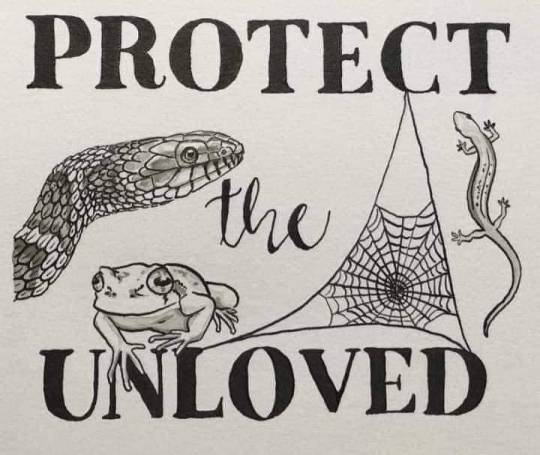
#YES#especially snakes#my beloved noodles#queue#snakes#frogs#lizards#spiders#reptiles#amphibians#invertebrates#art
18K notes
·
View notes
Text
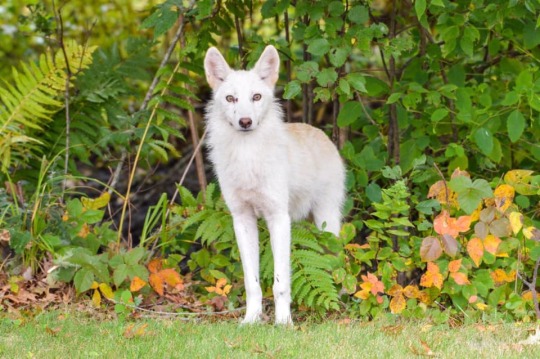
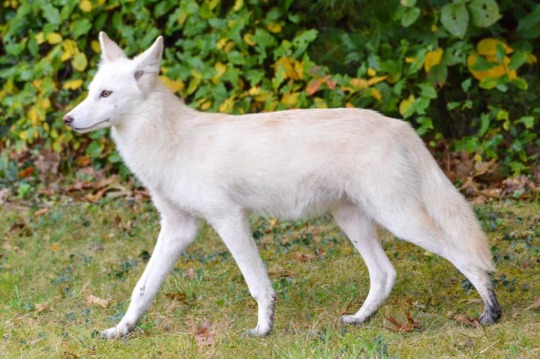
Leucistic Coyote in Falmouth, Virginia [x]
11K notes
·
View notes
Text
Turned off my askbox until I can get caught up.
#turning them off again#I'm up to 10 and I feel like it's getting ahead of me#also graduation and moving are happening next week#askbox
16 notes
·
View notes
Text
Why did no one tell me llamas sound like sheep?
#I don’t know what I thought they sounded like but it wasn’t a tiny adorable little lamb#llamas#camelids#vet student#vet school#vetblr
16 notes
·
View notes
Text
794 notes
·
View notes
Text
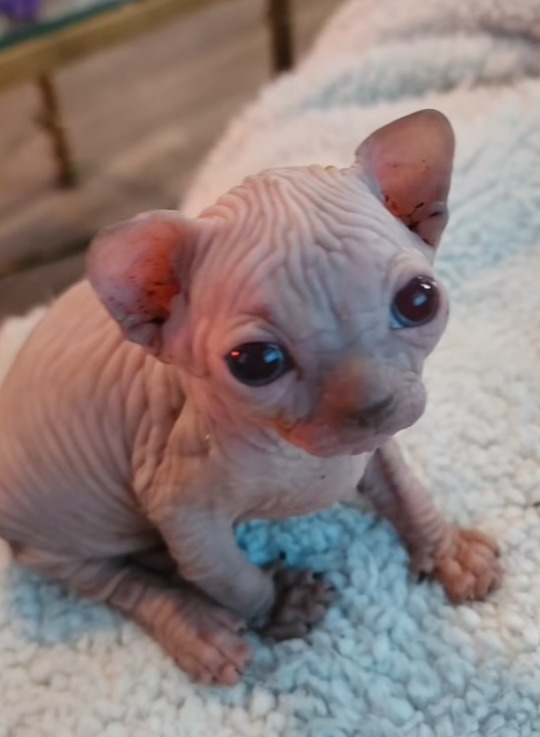

38K notes
·
View notes
Text
Vaquitas are indeed the world’s smallest cetacean! But this individual appears to be a calf. It still has “fetal folds”—those linear marks on its side—from being curled up in its mother’s womb. This is how large an adult is compared to a human:
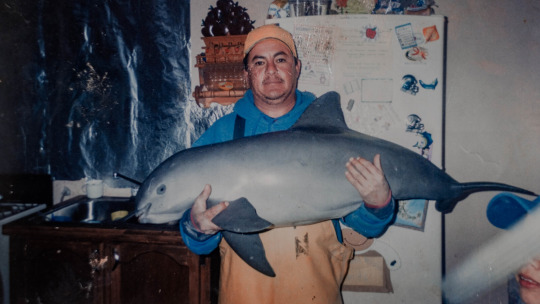
Tragically, vaquitas are also the most endangered cetacean in the world. Irresponsible fishery practices have reduced their numbers to approximately 10 individuals in 2024.
You can learn more about vaquitas and how to help them at VaquitaCPR.

let’s hear it for the world’s smallest whale (the vaquita) you guys!!
30K notes
·
View notes
Note
Wait, what’s the deal with seashepard? I grew up w a family that supported them and literally bought their merch and stuff
I was the same way! I thought they were so cool after watching Whale Wars. But unfortuantely, despite agreeing with their mission to end commercial whaling, I think their dangerous methods (not to mention their extreme anti-zoo and anti-Indigenous rhetoric) ultimately cause a lot more harm than good. Assaulting and harrassing whalers and sealers, many of whom rely on hunting to feed their families, isn't going to inspire any change. I've been told by folks that have had interactions with Sea Shepherd members that they have a reputation for alienating the communities they enter and being rude and aggressive to both locals and other anti-whaling organizations.
Captain Paul Watson founded Sea Shepherd in 1977 after leaving Greenpeace for disapproving of his "direct action" approaches. In 1986, Watson lead an attack on unoccupied whaling vessels in Iceland that got his group branded as terrorists. The act ultimately had a counterintuative effect, "turn[ing] Icelandic public opinion against the cause of saving whales" (x). In 2013, they were even labeled as "pirates" by a U.S. court for their aggressive actions toward occupied Japanese whaling ships: "When you ram ships; hurl containers of acid; drag metal-reinforced ropes in the water to damage propellers and rudders; launch smoke bombs and flares with hooks; and point high-powered lasers at other ships, you are, without a doubt, a pirate, no matter how high-minded you believe your purpose to be" (x). Sea Shepherd actually removed Watson in 2022 in an attempt to separate itself from his more radical tactics (and outstanding arrest warrants) and go legitmate. PETA denounced this as a betrayal to the animal rights movement.
Watson started his own organization (yet again), and Sea Shepherd is now lead by real estate mogul Pritam Singh. But I still hesitate to support them. In their bid to gain custody of Wikie and Keijo, they make several alarming statements, claiming that Nova Scotia is too cold for them since all they know is warm Mediterranean water (neglecting the fact that their habitat is chilled, something that can't be done in a pen) and that relocating to a sea pen in France will somehow be less stressful than moving to another pool. Wikie and Keijo were both born in the Marineland tanks. Even if we believe that a pen will be more beneficial to their welfare in the long run, it's downright foolish to claim that a pen is the "least stressful option." No one on their team has remotely any experience in captive cetacean husbandry, so they plan to continue employing Marineland trainers. Maybe don't accuse a group of animal abuse and then ask them to come work for you?
#don't let anyone use this as proof I support whaling#I hate whaling#especially on an industrial scale#but ecoterrorism isn't the answer#sea shepherd#answered asks#saltair-and-palemoonlight
27 notes
·
View notes
Text
youtube
Another example of water-based enrichment strategies with orcas. Not as cool as the wave pool but it's clear these high pressure water sprayers are a hit with the San Diego pod!
This water pressure would probably knock over a person but clearly the fire hose level high pressure is much more preferred than a normal hose. Since orcas are made mostly of blubber and muscle, it makes sense they need such high intensity pressure.
Tactile enrichment is very important for cetaceans, who are extremely tactile animals. They explore and socialise through touch, you'll also see them rub on rocks and sand to help slough off dead skin in the wild. In human care they get regular massages from trainers, as well as them rolling and rubbing on slide outs and using water spray enrichment like this!
#I love this so much#love seeing them enjoy a massage#it would be awesome if they could somehow install high powered jets underwater#to encourage them to stay below the surface#queue#orcas#killer whales#makani#keet#ulises#cetaceans#marine mammals#seaworld#aquariums#enrichment
34 notes
·
View notes
Text
You know I'm not a huge fan of the Whale Sanctuary Project, but if it comes down to either them or Sea Shepherd (the ecoterrorist organization who wants to build an orca sanctuary in the Mediterranean) getting Wikie and Keijo, then I'll go out to bat for the WSP.
#their jabs at the wsp in their proposal document are hilarious#fight fight fight fight#at least have wsp hasn't committed acts of terrorism and actually have some ex-trainers (from like 30 years ago but I digress) on staff#and wants to build in waters that are you know... not 70 degrees#there's no indication either of them are going to a sanctuary yet but who knows#the park doesn't seem to be doing too well#and granvista already moved stella to kobe suma#with their itty bitty 1970s esque tanks#so I don't think they're interested in the mla whales anymore#whale sanctuary project#sea shepherd
16 notes
·
View notes
Text

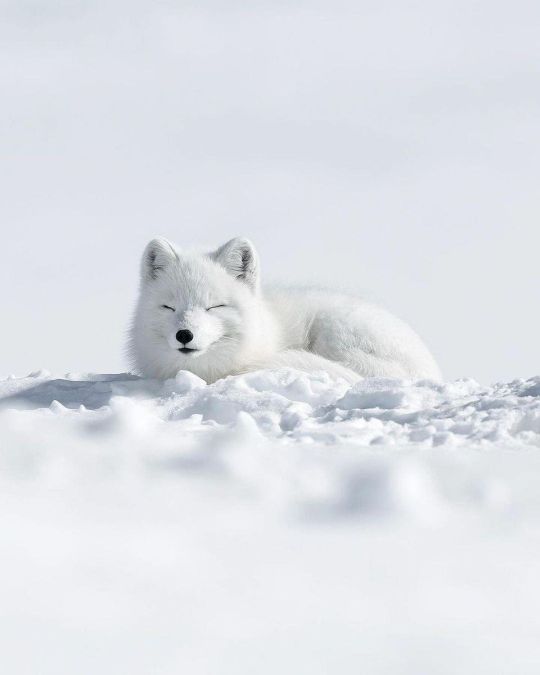
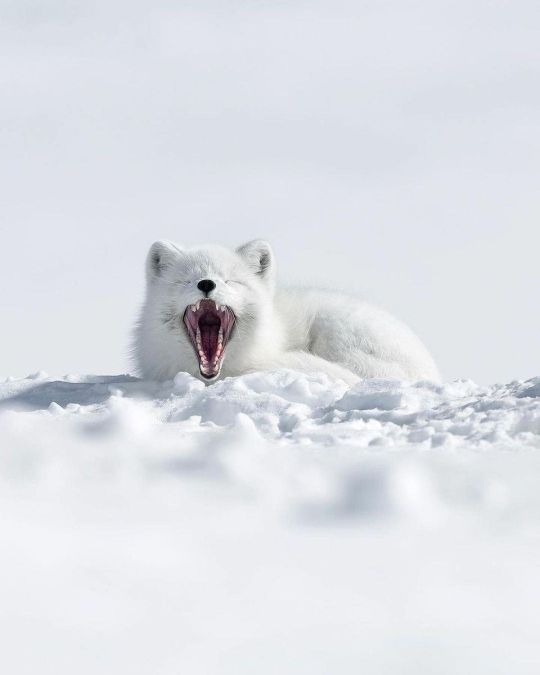
Fox from Swedish Lapland ❄️🦊 By @winbiorkphoto
4K notes
·
View notes
Text

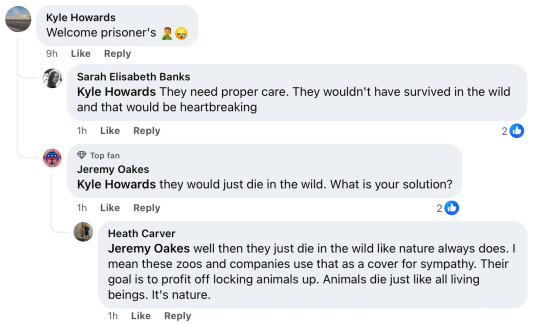
Hogle Zoo is an AZA accredited facility, opening up a new area 3 acre area called "Wild Utah" to feature various native Utah species. 3 of those animals are going to be orphaned cougar cubs that were rescued and unable to survive in the wild on their own.
Note that 2 of these cubs have shortened ears and tails because of frostbite. They were rescued in Nebraska where the weather conditions were severe, and again, these cubs were unequipped to handle it on their own.
This would be a very positive story about giving orphaned cubs a second chance at a good place where they will receive all the care that they need... or so you would think.
Instead, multiple people on the comments were asserting that they were just going to prisons, one even going so far as to say that it would've been better to just let them die.
Wonderful. Nothing says "I love animals" than explicitly saying that they're better off dead than at an accredited zoo. Again, you will note that 2 of the 3 were suffering things like frostbite when they were rescued. There is nothing humane about letting animals that are within your power to help die like that.
I cannot, and will never, understand the "logic" behind this kind of mindset. Yes, baby orphaned animals die in nature all the time. No, we cannot save them all. But for those we can help... why not help them? And why is a life well cared for at an accredited zoo somehow worse for them than suffering a slow and painful death from starvation and exposure?
These animals do not have the same concepts of freedom vs. prison like we do. All they knew was that their mother is gone, and they were cold and starving.
Yes, bad or less than ideal zoos exist. Hogle Zoo is not one of them. Zoos and aquariums are not universally prisons, and if you think that, then let me just ask... what kind of prisons have you been to!? Seriously, all of the animals I've had the privilege to work with eat better than I do, and are treated vastly better than human prisoners are. How privileged must you be to think that all zoos and prisons are equivalent to one another!
Here's the reality: the zoological industry is a complex, nuanced thing that is ever improving and expanding. We're not stuck in the 1970s like you are. Stop judging animal welfare based on vibes, and stop drinking the PETA, HSUS et al. kool aid, because they're lying to you.
#yep!#but hey gotta give the guy credit#at least he didn’t say ‘send them to a sanctuary instead!’#cougars#hogle zoo#zoos#ara insanity
215 notes
·
View notes
Text
15K notes
·
View notes
Note
Hi! I’m currently working on a big, detailed Blackfish rebuttal, which means lots of rabbit holes. I recently started rereading John Hargrove’s book (ugh). He talks about how the original Shamu died of pyometra and septicemia, claiming that it was something that, apparently, would almost never happen in the wild. The obvious implication here is that captivity caused these conditions, and/or that such is common with captive orcas. However, obviously septicemia can be caused by a variety of things, wild or not. As for pyometra, he doesn’t provide other examples of captive orcas suffering pyometra, nor have I been able to find other examples described in peer reviewed literature. It seems that that isn’t particularly common in cetaceans period, whether they’re wild or not, but I’m also not a marine mammal veterinarian. Since you’d know better about cetacean medicine, I was wondering if you knew anything more about this.
Ooh, that'll be interesting! I'd love to read it!
You're correct that Shamu is the only reported case of pyometra in a killer whale, wild or captive. The CRC Handbook of Marine Mammal Medicine makes no mention of pyometra in cetaceans, although it does occur in both wild and captive pinnipeds and has been reported in sea otters and sirenians. Pyometra is typically the result of bacteria migrating up the vaginal tract into the uterus, which at certain times is more susceptible to infection due to normal hormonal fluctuations. Theoretically, anything with a uterus can get pyometra, though some species are more commonly affected than others.
I would hedge to bet that pyometra is rare in cetaceans because of their truly unusual reproductive anatomy. Females have a lot of redundant tissue in their vaginal tract, creating "false cervixes" and overall making it a lot more difficult for anything to reach the uterus.
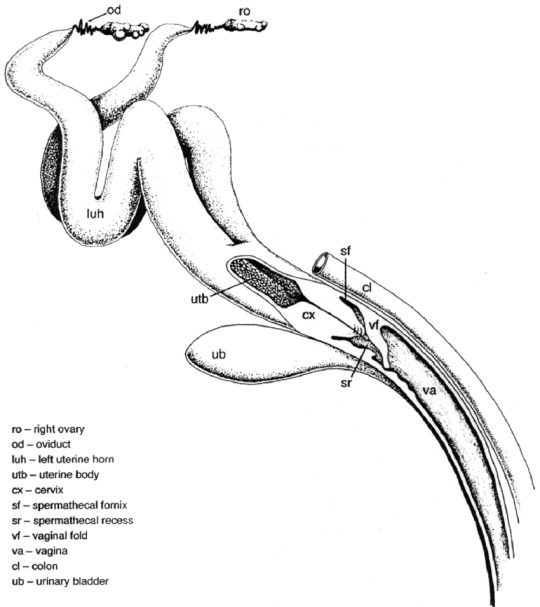
See all those extra recesses around the cervix?
I did find this case report on a necropsy of a wild short-beaked common dolphin. Pyometra was one of many nasty issues afflicting the poor girl, so it can indeed occur in nature. Since this individual was suffering from co-infections of bacteria and cetacean morbillivirus, she was clearly immunocompromised. It's highly likely Shamu was as well.
Overall, pyometra of cetaceans (including orcas) appears to be quite rare in both the wild and managed care. Shamu was the very first orca intentionally captured for public display, nearly 60 years ago, and only survived six years in captivity before her death at approximately age 10. Virtually nothing was known about killer whale husbandry at the time, so it's not at all unreasonable to assume that poor husbandry, nutrition, and stress negatively impacted her immune function to the point she succumbed to pyometra.
However, it's a weak argument on Hargrove's part to compare the SeaWorld of today (with multiple orcas now in their 30s, 40s, and 50s) to the SeaWorld of the 1960s, and their very first whale at that. Especially using a condition that has not been reported in a captive orca since.
#orcas#killer whales#dolphins#shamu#cetaceans#marine mammals#vet med#pyometra#answered asks#ihazyourkitty
37 notes
·
View notes